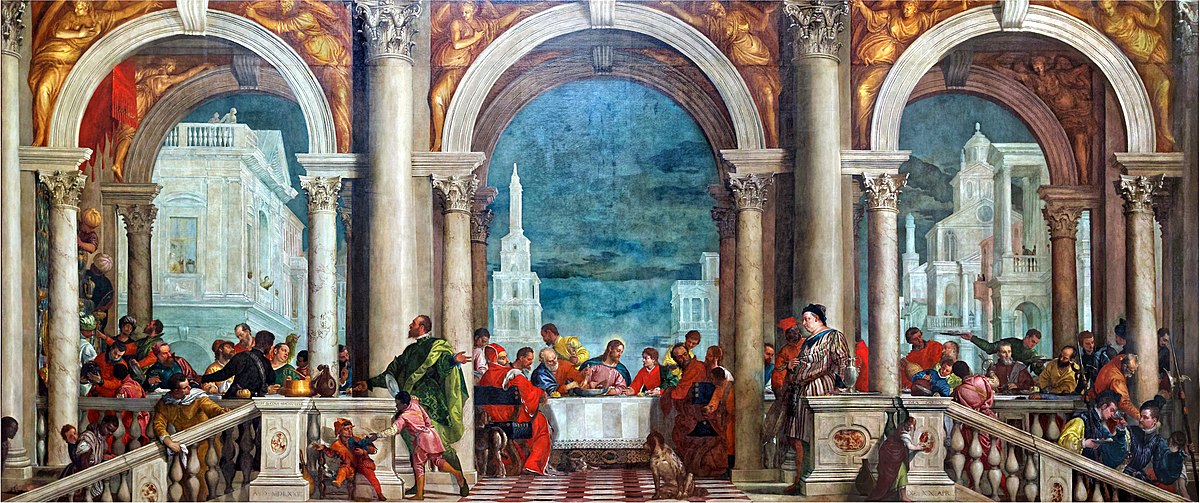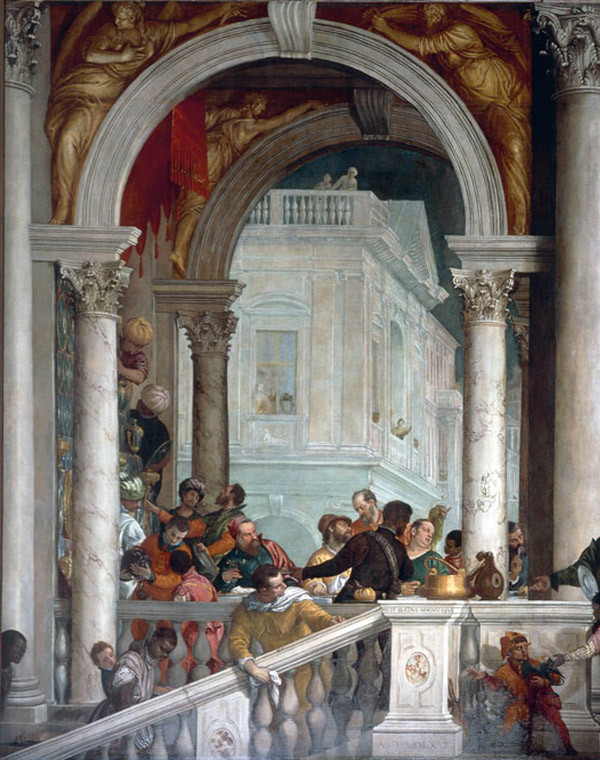
The Last Supper by Paolo Veronese is one of the most famous works of the Venetian Renaissance. This painting, completed in 1573, is housed in the Gallerie dell’Accademia in Venice and is famous for a trial that Veronese had to undergo, who was forced to change the work’s name to Supper in the Levi House.
Paolo Veronese’s Last Supper that became the Supper at Levi’s House

The Last Supper by Paolo Veronese was painted for the refectory of the convent of Santi Giovanni e Paolo in Venice.
The work was commissioned on 20 April 1573 to replace Titian’s Last Supper, which had been destroyed by fire.
The work was executed according to instructions but Veronese described the scene of the Last Supper in a new way and when he delivered the painting it was rejected.
DESCRIPTION OF THE LAST SUPPER BY PAOLO VERONESE
Paolo Veronese’s Last Supper shows Christ with the apostles seated around a long, richly decorated table. The focus of the painting is on the figures of the characters, with particular attention to facial expressions and gestures.
The most interesting feature of the work is the settings and decorations, which are detailed and vivid.
Veronese was accused of having created a blasphemous work and had to justify the presence of some elements that did not seem pertinent to the subject.
For instance, he had included soldiers in German armour and added a court jester with a parrot that was a symbol of lust.
Moreover, one of the diners is caught in the moment of a nosebleed, while Peter and not Christ breaks the lamb.
All these elements seemed to declare an adherence to the reformist ideas that were having so much success in Northern Europe and the Venetian convent of Santi Giovanni e Paolo could not accept it.
ANALYSIS AND DEFENCE OF PAOLO VERONESE’S LAST SUPPER
Paolo Veronese’s Last Supper is certainly one of the most beautiful works of the Venetian Renaissance, but it became famous more for the scandal it caused than for the quality of the painting.
The improper elements of any depiction of the Last Supper triggered the wrath of the Inquisition, which put the artist on trial for blasphemy.
Paolo Veronese defended himself by stating that the inappropriate elements were purely decorative and had no intention of offending religion. The painter managed to avoid conviction thanks to his great reputation as an artist and the influence of those who supported him.
He only had to change the name of the work to Supper in the Levi House.
Despite the controversy that accompanied its completion, today Paolo Veronese’s Last Supper is considered one of the most important and representative works of Venetian Renaissance art. Its beauty and majesty continue to inspire admiration among art lovers all over the world.

